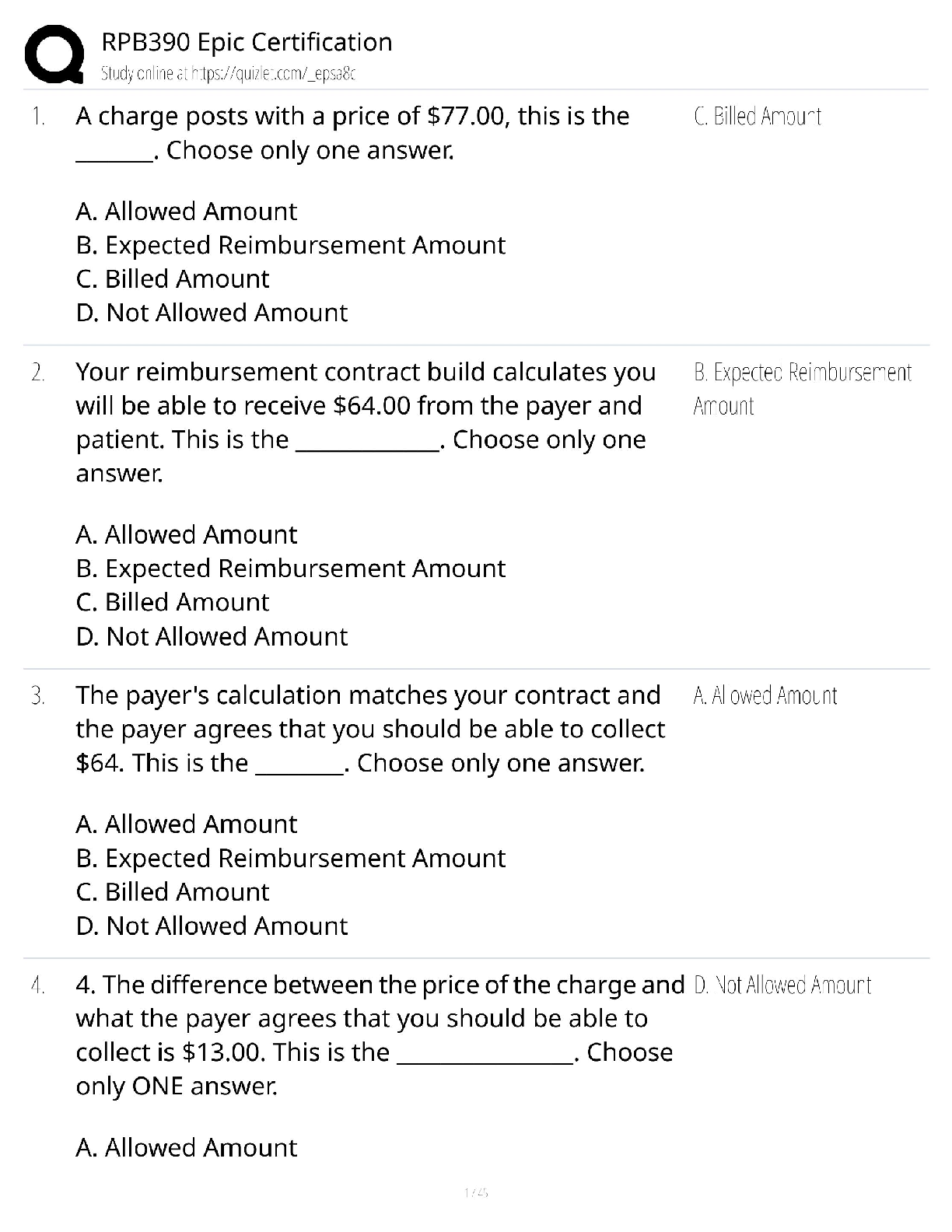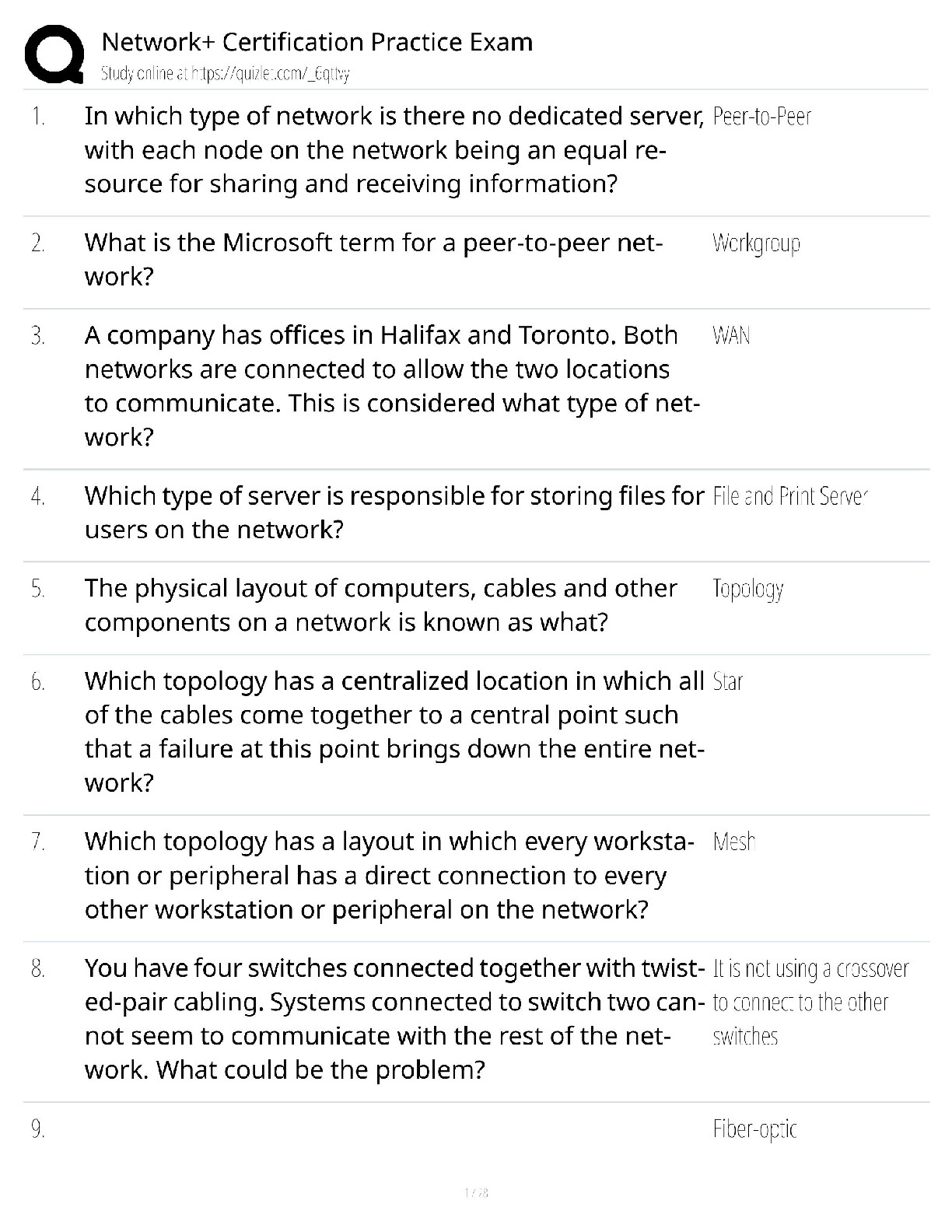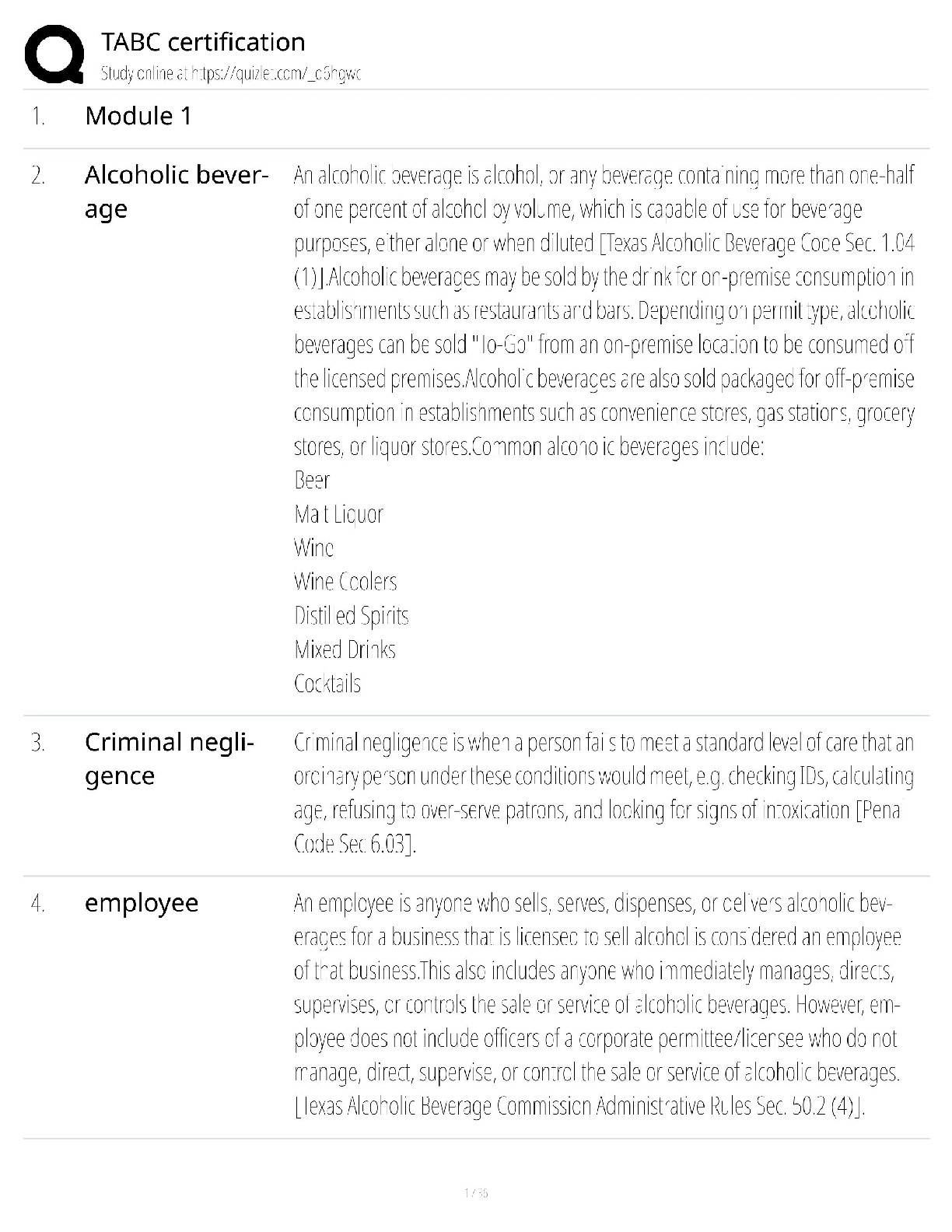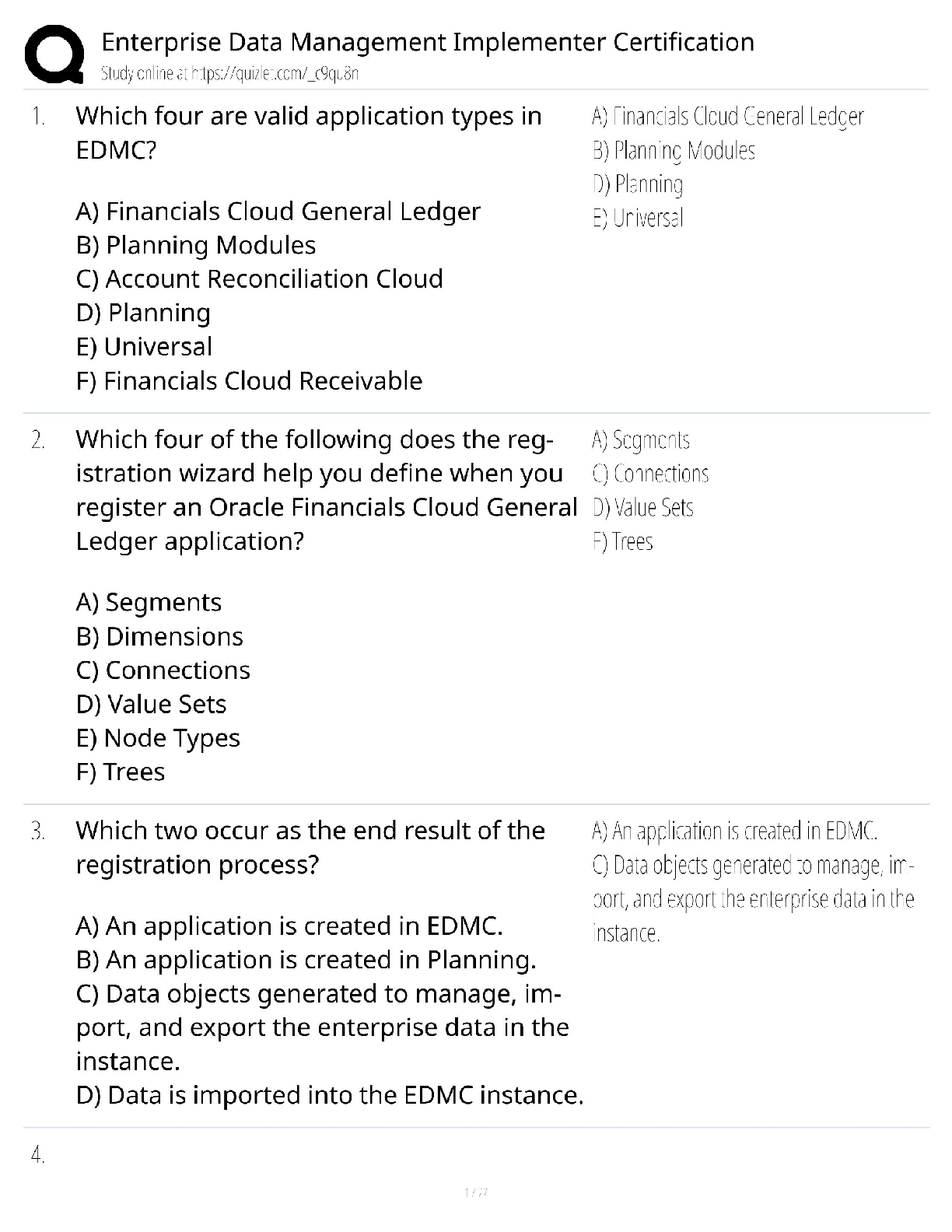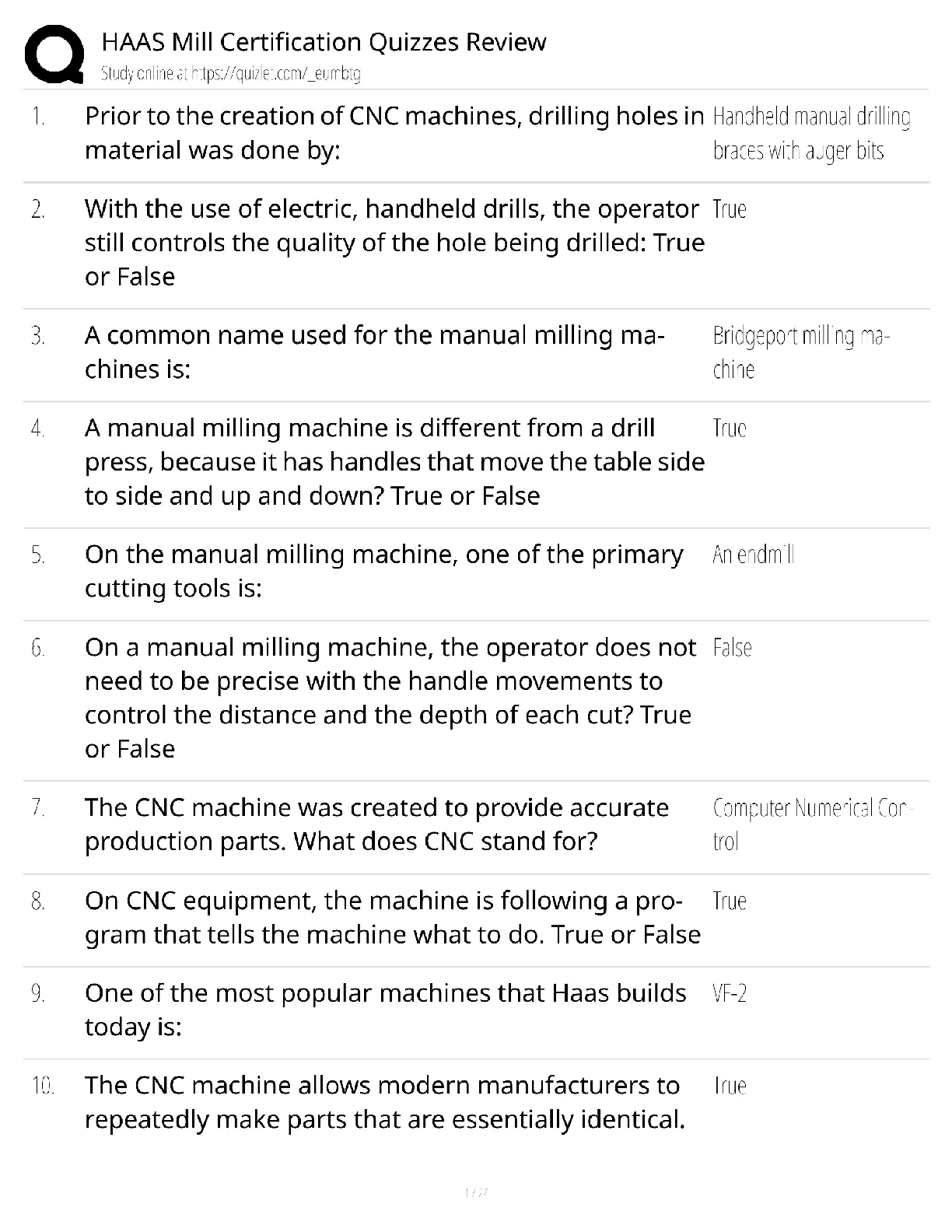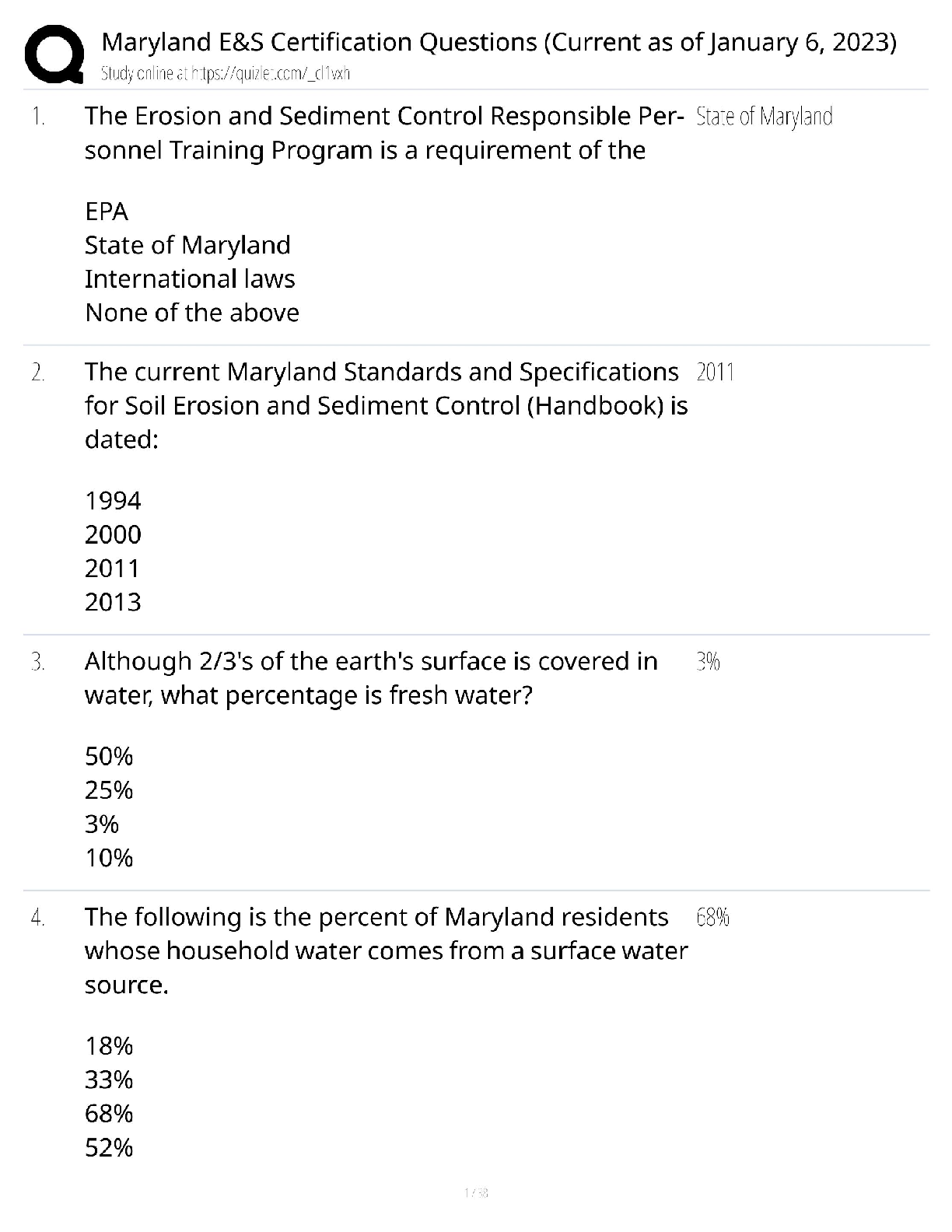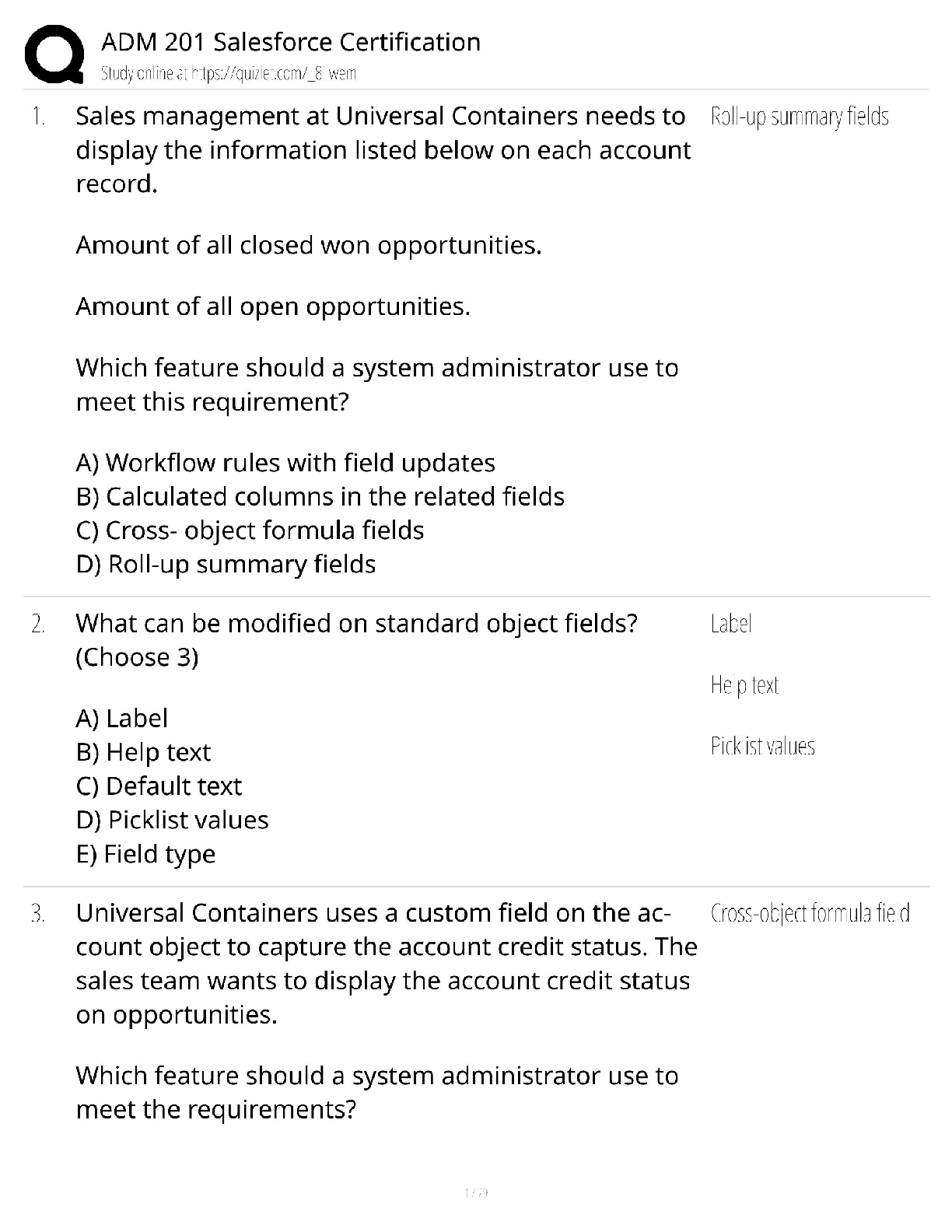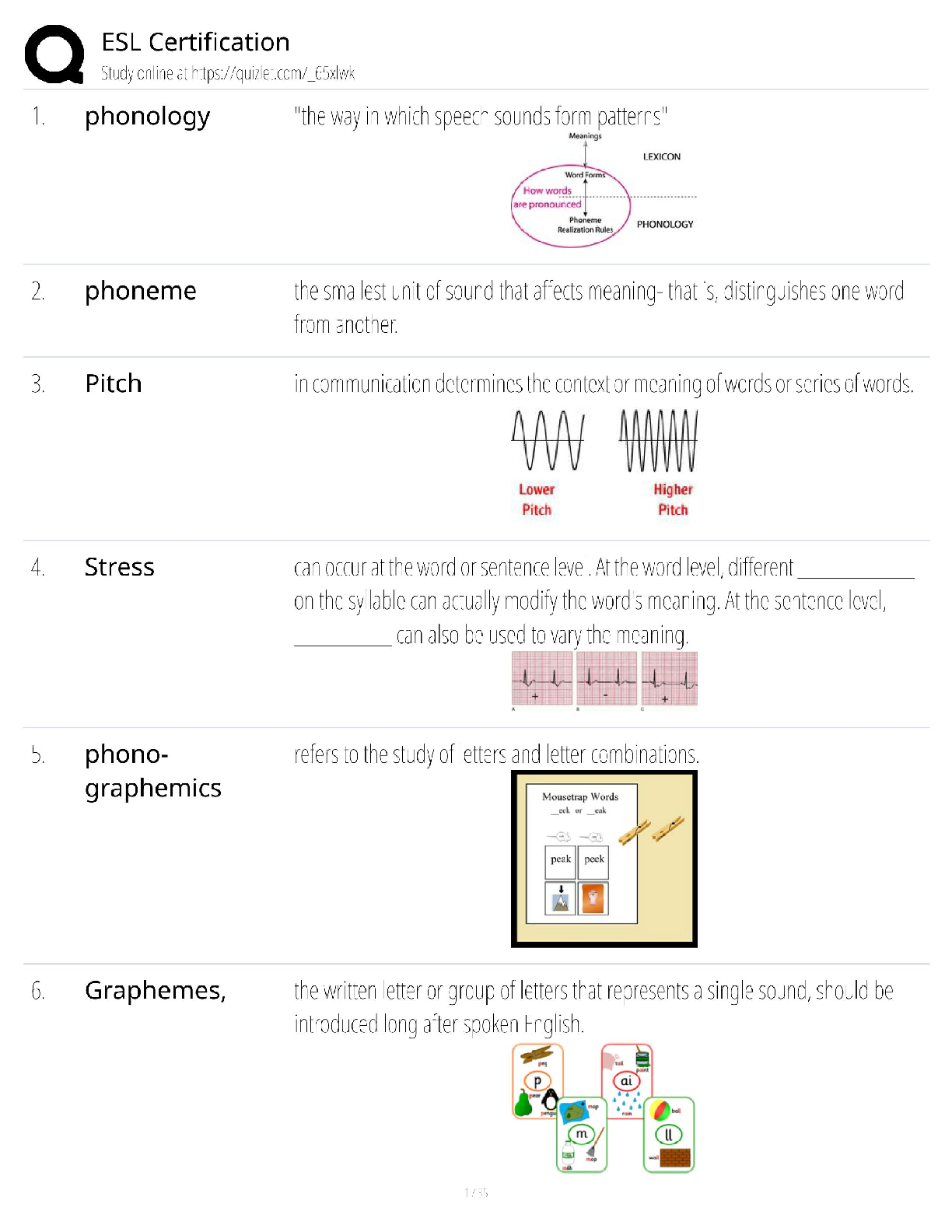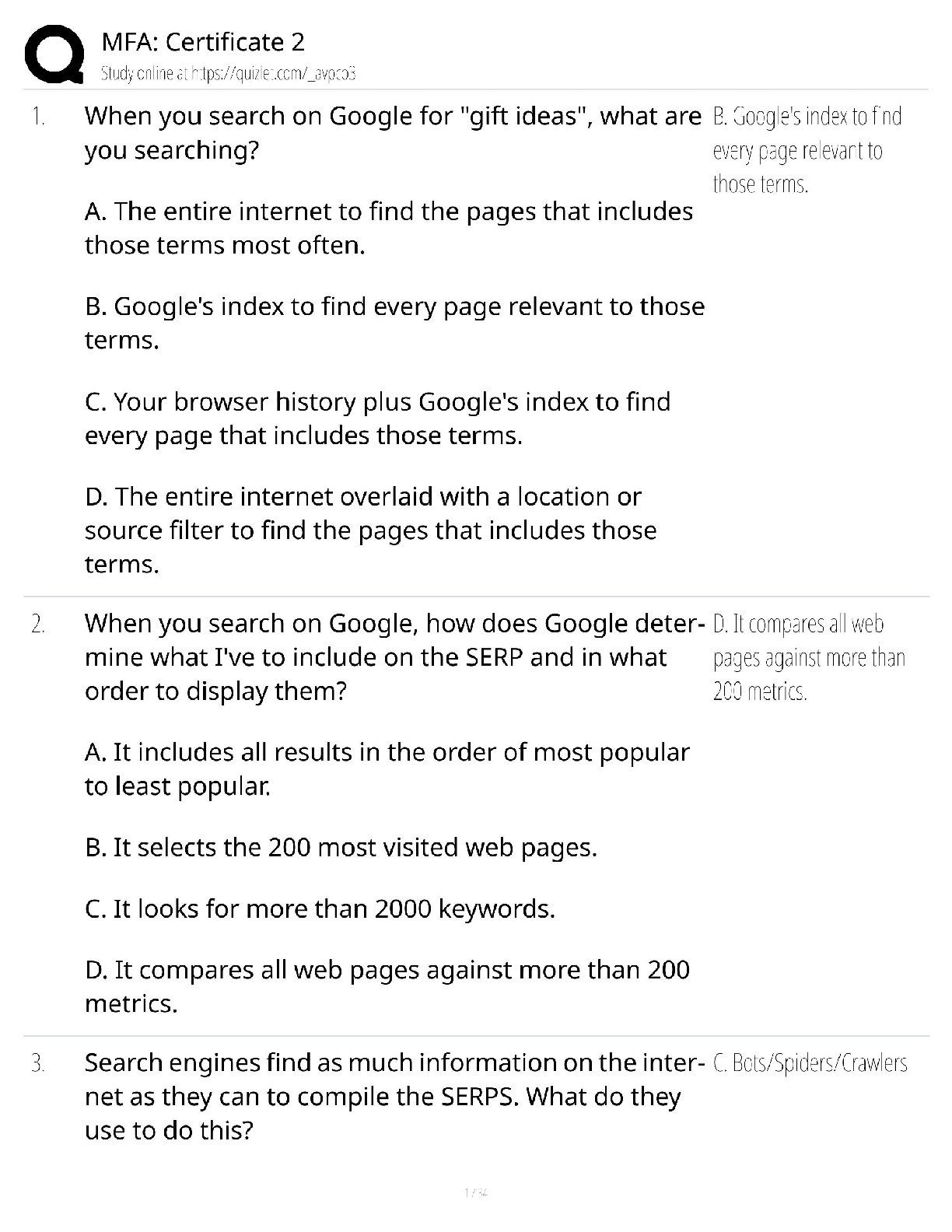Computer Science > QUESTIONS & ANSWERS > OSI Model Questions and Answers 100% Pass (All)
OSI Model Questions and Answers 100% Pass
Document Content and Description Below
OSI Model Questions and Answers 100% Pass OSI Model ✔✔model for understanding and developing computer-to-computer communication; divides networking functions among 7 layers Application, Presen ... tation, Session, Transport, Network, Data Link, Physical TCP/IP ✔✔Transmission Control Protocol/Internet Protocol. Protocol that connects computers to the Internet. Tells computers how to exchange information over the Internet. Application Layer ✔✔Layer 7 of the OSI model. The network layer that houses the applications that allow users to access the network. It contains five categories of services, File services, email services , network printing services, Application services and database services. Presentation Layer ✔✔The sixth layer of the OSI model. Protocols in the Presentation layer translate between the application and the network. Here, data are formatted in a schema that the network can understand, with the format varying according to the type of network used. The presentation layer also manages data encryption and decryption, such as the scrambling of system passwords. Session Layer ✔✔The fifth layer in the OSI model. The Session layer establishes and maintains communication between two nodes on the network. It can be considered the "traffic cop" for network communications. Transport Layer ✔✔4th layer; protocols ensure that data are transferred from point A to point B reliably and without errors; services include flow control, acknowledgment, error correction, segmentation, reassembly, and sequencing Network Layer ✔✔The third layer of the OSI model. Protocols in the Network layer translate network addresses into their physical counterparts and decide how to route data from the sender to the receiver. DataLink Layer ✔✔Gives unique identities to senders and receivers. Organizes data packets into frames for transmission Layer 2 Physical Layer ✔✔The lowest, or first, layer of the OSI model. Protocols in the physical layer generate and detect signals so as to transmit and receive data over a network medium. These protocols also set the data transmission rate and monitor data error rates, but do not provide error correction. Encapsulation ✔✔Encapsulation is the process of transferring packets of data which use different communications protocols inside packets which use another protocol. Sequencing ✔✔Arranging items or events in particular order Flow Control ✔✔A method of gauging the appropriate rate of data transmission based on how fast the recipient can accept data. buffering ✔✔Most networks can and do use buffering to keep up when packets are flowing in too quickly for the network to process. Windowing ✔✔When using TCP, after a session is open, the applications can adjust the amount of segments they recieve before sending an acknowledgment. PDU ✔✔Protocol Data Unit Protocol ✔✔A standard that specifies the format of data as well as the rules to be followed during transmission IPX/SPX ✔✔a protocol suite used by Novell. This is an antiquated protocol that is rarely seen now that Novell has moved to TCP/IP. TCP ✔✔A networking protocol that uses packet switching to facilitate the transmission of messages; the protocol used with the Internet. UDP ✔✔A connectionless protocol for fast transport but no guarantee of delivery. Connectionless ✔✔A type of Transport layer protocol that services a request without requiring a verified session and without guaranteeing delivery of data. Connection Oriented ✔✔A type of Transport layer protocol that requires the establishment of a connection between communicating nodes before it will transmit data. Session ✔✔A single communication or connection for data exchange between two computers. The term session may be used in the context of Web, remote access or terminal and mainframe communications, for example. API ✔✔application programming interface specifies a software component in terms of its operations, their inputs and outputs and underlining types. Packet ✔✔A small unit of data transmitted over a network. Segment ✔✔A unit of data that results from subdividing a larger protocol data unit Frame ✔✔Encloses the segment in a network MAC Address ✔✔A permanent address given to each network interface card (NIC) at the factory. This address enables the device to access the network via a Level-2 protocol. No two NIC devices will ever have the same MAC address. Also called a physical address. IP Address ✔✔A number assigned to a device connected to the Internet. Websites use this to send the information you want back to your computer from nearby or all the way around the world. A website name is converted to an IP address number so the computer can locate it. Checksum ✔✔A method of error checking that determines if the contents of an arriving data unit match the contents of the data unit sent by the source. CRC ✔✔Cyclic Redundancy Check Routing ✔✔A function of the Network layer that involves moving data throughout a network. Data passes through several network subnetworks using routers that can select the path the data takes. See also router. Encyption ✔✔Process of transforming data into a type that prevents casual observers from deciphering. Compression ✔✔A technique that reduces the file size of bitmap images [Show More]
Last updated: 2 years ago
Preview 1 out of 6 pages
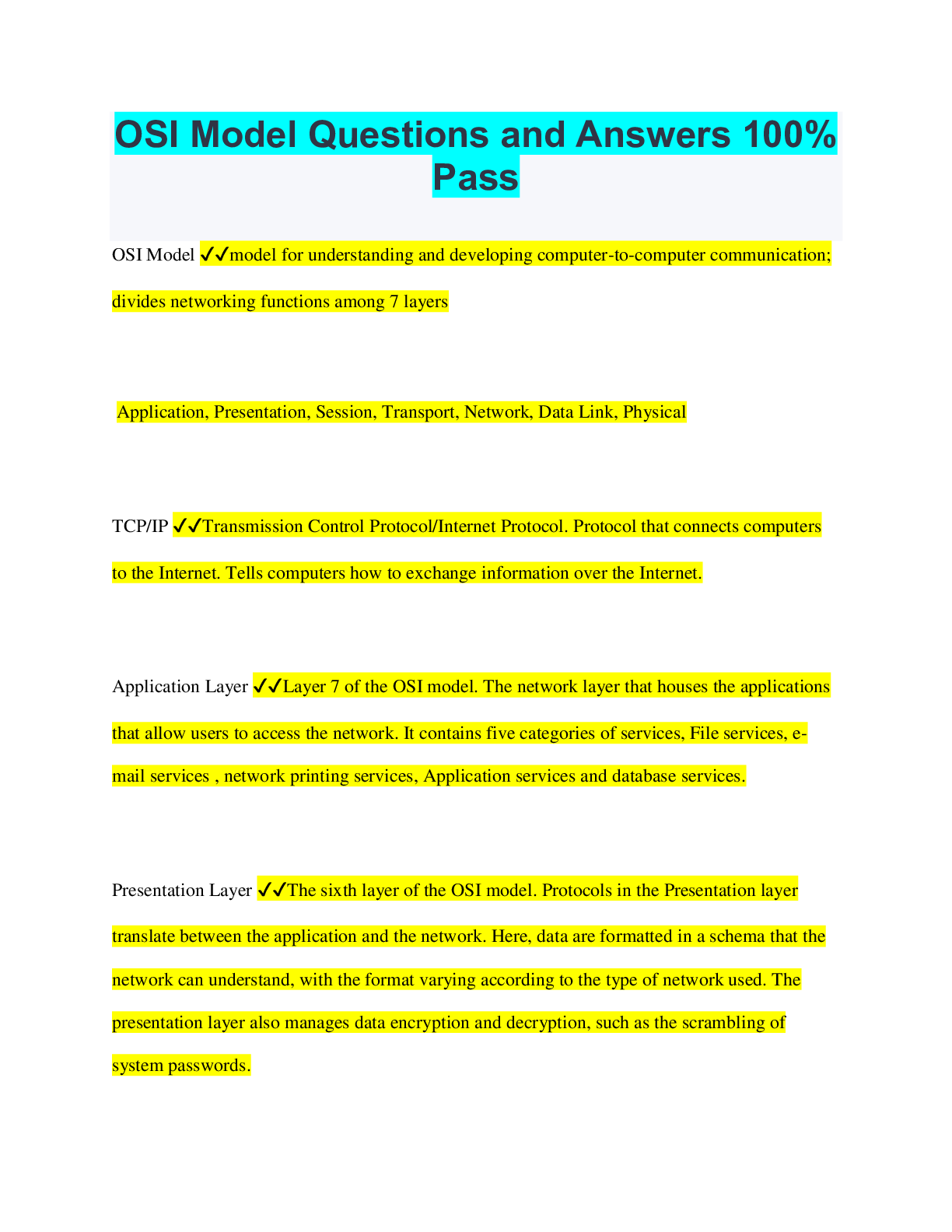
Buy this document to get the full access instantly
Instant Download Access after purchase
Buy NowInstant download
We Accept:

Also available in bundle (1)
Click Below to Access Bundle(s)

OSI BUNDLED EXAMS QUESTIONS AND ANSWERS WITH COMPLETE SOLUTIONS
OSI BUNDLED EXAMS QUESTIONS AND ANSWERS WITH COMPLETE SOLUTIONS
By Nutmegs 2 years ago
$20
14
Reviews( 0 )
$10.00
Can't find what you want? Try our AI powered Search
Document information
Connected school, study & course
About the document
Uploaded On
Apr 14, 2023
Number of pages
6
Written in
All
Additional information
This document has been written for:
Uploaded
Apr 14, 2023
Downloads
0
Views
131






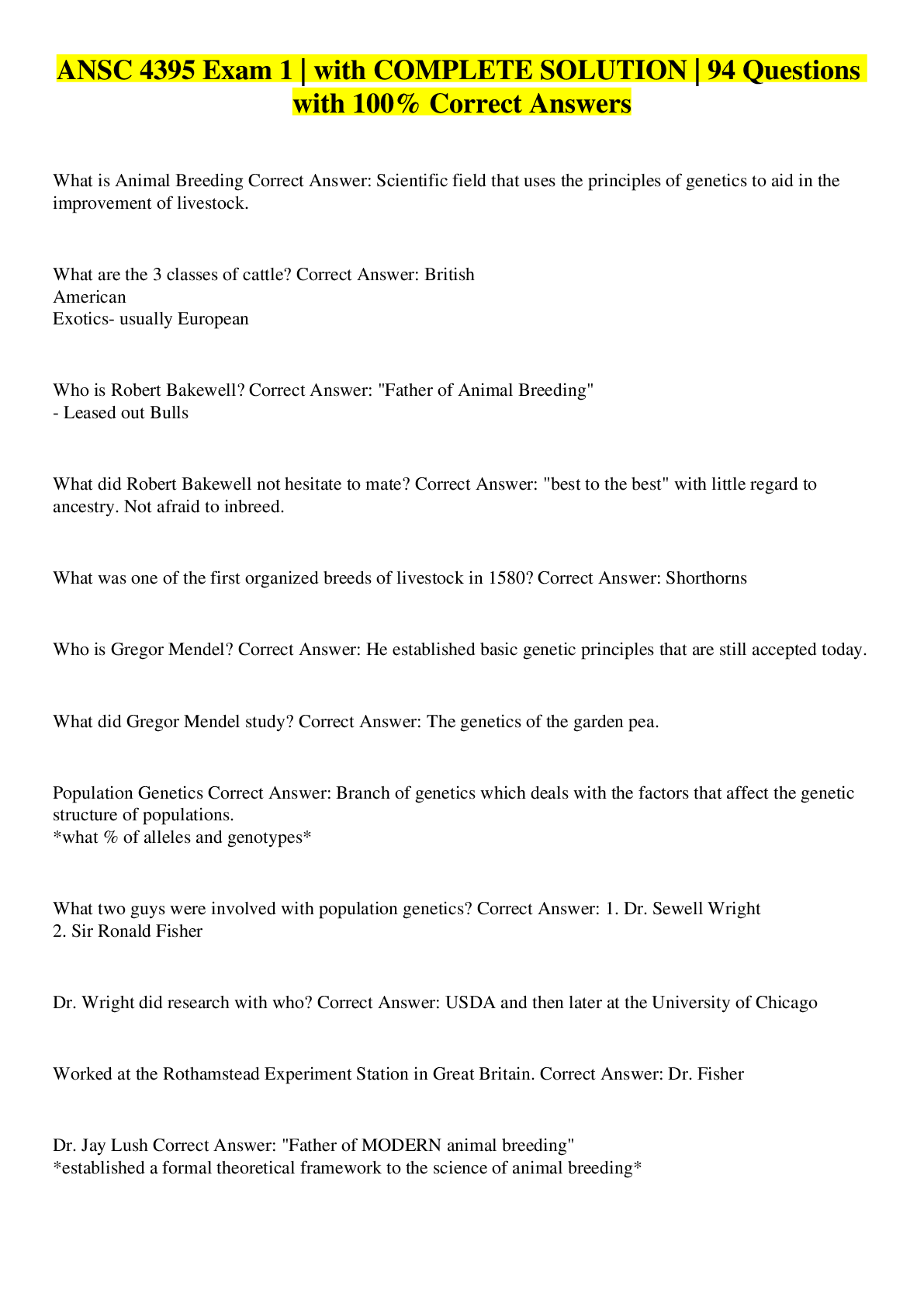

.png)





